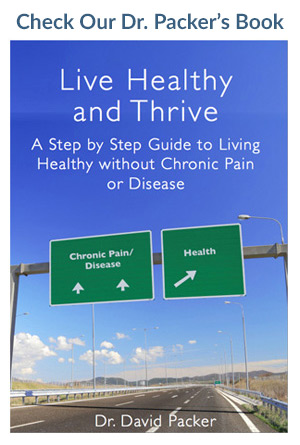 If you have been in a low-speed car accident and have neck pain, you may wonder if the accident caused your symptoms. Especially if there is no visible damage to your car, you may wonder if your symptoms can be due to the accident or are from another cause.
If you have been in a low-speed car accident and have neck pain, you may wonder if the accident caused your symptoms. Especially if there is no visible damage to your car, you may wonder if your symptoms can be due to the accident or are from another cause.
As a NUCCA chiropractor in Virginia for more than 20 years, I have extensive experience treating patients who have had car accidents. Many of my patients have suffered from whiplash injuries, which are very common even in low speed accidents.
In this article, I will answer common questions my patients have about whiplash and the types of accidents that can produce whiplash injuries.
What Car Accident Speeds Can Produce Whiplash?
Whiplash can occur at any speed. Crash tests have shown that an accident at speeds as low as 2.5 mph can produce injury. These injury-producing accidents can occur at speeds below those which cause any visible damage to your car, which is typically around 7.5 mph. For this reason, experts believe there is no link between injury and vehicle speed or if there is vehicle damage.
What Kind of Car Accidents Cause Whiplash?
Car accidents of all types can cause whiplash. Any impact that causes a jarring movement to the neck can cause the damage that leads to a whiplash injury. This includes both high and low speed accidents. Further, whiplash can occur whether the impact to the car is from behind (as in being rear-ended) or from the side (as in being T-boned).
What is Whiplash?
In medical terms, whiplash is known as cervical acceleration/deceleration, or CAD. It is caused by a sudden transfer of energy into your neck. This energy causes the structure of your neck to suddenly straighten and bend beyond its normal range of motion. This damage to the bones and soft tissues in the neck then results in inflammation and swelling, which causes pain.
If you watched a whiplash injury take place in slow motion, you would see that the injury itself commonly occurs in three stages:
- Stage 1: The upper and lower spine flex upon impact
- Stage 2: The spine becomes S-shaped while it begins to extend and then straightens
- Stage 3: The spine extends with the force of the accident, compressing the joints
Although commonly linked to car accidents, any type of abrupt movement in the neck can cause whiplash. Causes include:
- Car accidents, even at low speed
- Amusement park rides like roller coasters
- Contact sports like football
- High impact sports like gymnastics
- Being hit in the face
- Falls
What Are Risk Factors for a Whiplash Injury?
Although anyone can get whiplash, certain factors put you at higher risk for whiplash injury. These include:
- Older age: With age, muscles in the neck can become weaker. Further, connective tissue like tendons and ligaments may not be as flexible as in a younger person, increasing the chances of a whiplash injury.
- Pre-existing neck problems: Those with preexisting neck problems like arthritis/degeneration in the neck may be at higher risk of a whiplash injury
- Occupant position and bracing: Position of the head and neck (looking up, turned to left or right) and whether braced or hit by surprise at impact may increase chance of injury.
Whiplash Injury Symptoms
Whiplash injuries can cause a variety of symptoms. They can differ in terms of severity. A person with a whiplash injury may have some or all of these neck symptoms, which include:
- Pain
- Stiffness
- Tenderness
- Decreased range of motion
- Abnormal sensations
- Decreased reflexes
- Muscle weakness
- Fracture
How to Treat Whiplash Injuries
It is important to have any neck or back pain evaluated after an accident. It is important to note that pain may not show up immediately after an injury: it can take hours, days, or even weeks in some cases for pain to develop.
If you begin to have neck pain after an injury, it is important to have it evaluated by your doctor or the ER. They will be able to examine the area and order X-rays or CT scans to rule out serious injuries like a fracture or dislocation.
Although many people think the best way to treat an injury is rest, this can do more harm than good in whiplash. Prolonged rest can make the muscles in your neck and back stiffer and weaker, increasing your pain. For this reason, common treatments following a whiplash injury include stretching exercises. Chiropractors often incorporate multiple treatments into whiplash injury therapy, including:
- Spinal adjustments
- Massage therapy
- Muscle stimulation
- Active specific exercises/stretches
- Ergonomic changes
- Lifestyle modifications
Your doctor will let you know when it is safe to resume activity after your injury. In addition, your doctor may recommend other treatments like physical therapy to help you recover your muscle strength and flexibility as you heal.
Treating your Whiplash Injury at Precision Spinal Care
I have extensive experience treating patients with whiplash Precision Spinal Care. This clinical experience, in addition to my advanced chiropractic and medical training, helps qualify me to treat your pain and help you recover from your accident.
After an initial exam and a thorough assessment of your whiplash symptoms, I will discuss my treatment strategy with you. I will take the time to answer all your questions.
If I find that chiropractic care is not the best solution to suit your needs, I will recommend the type of specialist who is most appropriate for you. Further, if other specialists can help complement your recovery, I will include a referral in your care plan.
We understand that you need to explore all your options when you look for expert treatment. At Precision Spinal Care, we are happy to help you determine the best way to address your specific needs and discuss all your options.
Call our office at (757) 382-5555 to speak to the doctor or set up a consultation. You can also set up an appointment through our webpage.

